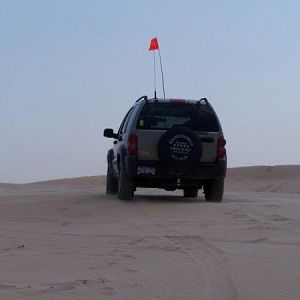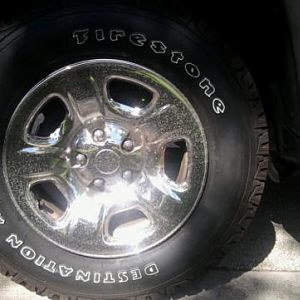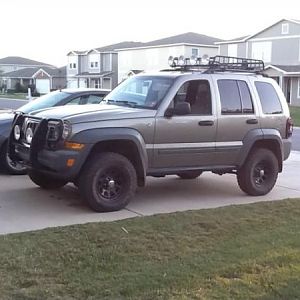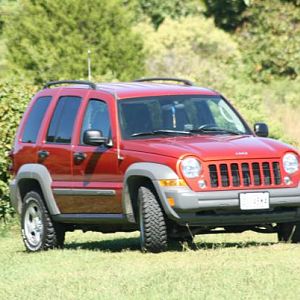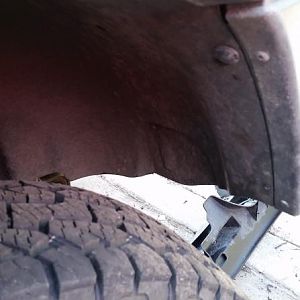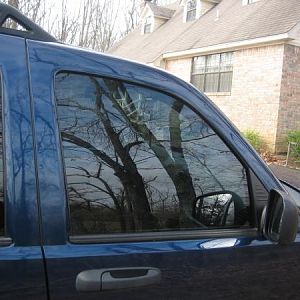Interior Lighting Control - The BCM monitors inputs from the interior lighting switch, the door ajar switches, the flip-up glass ajar switch, the tail-gate ajar switch, the cargo lamp switch, the reading lamp switches, and the RKE system to provide courtesy lamp control. This includes support for timed illuminated entry with theater-style fade-to-off and courtesy illumination defeat features.
Intermittent Wipe and Front Wiper System Control - The BCM monitors inputs from the front wiper and washer switch and the front wiper motor park switch to provide front wiper system control through the wiper on/off and high/low relays. This includes support for adjustable intermittent wipe, mist wipe (also known as pulse wipe), and wipe-after-wash features.
Key-In-Ignition Switch Status - The BCM monitors and transmits the status of the key-in-ignition switch.
Panic Mode - The BCM provides support for the RKE system panic mode feature.
Parade Mode - The BCM provides a parade mode (also known as funeral mode) that allows the interior Vacuum Fluorescent Displays (VFD) to be illuminated at full intensity while driving in daylight with the exterior lamps On.
Power Locks - The BCM monitors inputs from the power lock switches and the RKE system to provide control of the power lock motors through outputs to the lock, unlock, and driver unlock relays. This includes support for rolling door locks (also known as automatic door locks) and a door lock inhibit mode.
Programmable Features - The BCM provides support for several standard and optional programmable features, including: rolling door locks, headlamp time delay interval, RKE driver-door-only or unlock-all-doors, RKE optical chirp, and RKE audible chirp.
Remote Keyless Entry - The BCM provides support for the RKE system features, including support for the RKE Lock, Unlock (with optional driver-door-only unlock, and unlock-all-doors), rear flip-up glass control, Panic, audible chirp, optical chirp, and illuminated entry modes.
Rolling Door Locks - The BCM provides support for the power lock system rolling door locks feature (also known as automatic door locks).
Tailgate and Flip-Up Glass Ajar Status - The BCM monitors and transmits the status of the tail-gate and rear flip-up glass ajar switches.
Remote Radio Switch Interface - The BCM monitors and transmits the status of the optional remote radio switches.
Self-Diagnostics - The BCM provides support for diagnostics through communication with a diagnostic scan tool over the PCI data bus network. Each analog and digital input can be verified, and each output can be actuated through the use of this diagnostic protocol. The BCM also stores Diagnostic Trouble Codes (DTCs) to assist in the troubleshooting of this unit.
Vacuum Fluorescent Display Synchronization - The BCM transmits panel lamp intensity data which allows modules with Vacuum Fluorescent Displays (VFD) to coordinate their illumination intensity.
Vehicle Theft Security System - The BCM monitors inputs from the door ajar switches, the tail-gate ajar switch, the flip-up glass ajar switch, the hood ajar switch (in required markets only), and the RKE system to control the features of the optional Vehicle Theft Security System (VTSS).
Hard wired circuitry connects the BCM to the electrical system of the vehicle. These hard wired circuits are integral to several wire harnesses, which are routed throughout the vehicle and retained by many different methods. These circuits may be connected to each other, to the vehicle electrical system and to the BCM through the use of a combination of soldered splices, splice block connectors, and many different types of wire harness terminal connectors and insulators. The wiring information includes wiring diagrams, proper wire and connector repair procedures, further details on wire harness routing and retention, as well as pin-out and location views for the various wire harness connectors, splices and grounds.
Many of the electronic features in the vehicle controlled or supported by the BCM are programmable using a customer programming procedure or a diagnostic scan tool. In addition, the BCM software is Flash compatible, which means it can be reprogrammed using Flash reprogramming procedures. However, if any of the BCM hardware is damaged or faulty, the entire BCM unit must be replaced.
The microprocessor-based Body Control Module (BCM) monitors many hard wired switch and sensor inputs as well as those resources it shares with other electronic modules in the vehicle through its communication over the Programmable Communications Interface (PCI) data bus network. The internal programming and all of these inputs allow the BCM microprocessor to determine the tasks it needs to perform and their priorities, as well as both the standard and optional features that it should provide. The BCM programming then performs those tasks and provides those features through both PCI data bus communication with other electronic modules and through hard wired outputs through a number of driver circuits, relays, and actuators. These outputs allow the BCM the ability to control numerous accessory systems in the vehicle.
The BCM operates on battery and ignition voltage inputs received through several fuses in the Junction Block (JB) on a non-switched fused B(+) circuit, through another fuse in the JB on a fused ignition switch output (run-start) circuit, and through a third fuse in the JB on a fused ignition switch output (run-acc) circuit. This arrangement allows the BCM to provide some features regardless of the ignition switch position, while other features will operate only with the ignition switch in the On, Start, and/or Accessory positions. All of the battery voltage circuits are connected to the BCM through the JB/BCM connector.
The BCM receives ground through five separate circuits. Three of these circuits are connected to the BCM through a connector of the instrument panel wire harness on three separate ground circuits, while the other two circuits are connected to the BCM through the JB/BCM connector. Each of these circuits receives a path to ground through the instrument panel wire harness with an eyelet terminal connector that is secured by a nut to a ground stud on the driver side instrument panel end bracket near the JB.
The BCM monitors its own internal circuitry as well as many of its input and output circuits, and will store a Diagnostic Trouble Code (DTC) in electronic memory for any failure it detects. These DTCs can be retrieved and diagnosed using a diagnostic scan tool.
INPUT AND OUTPUT CIRCUITS
HARD WIRED INPUTS
The hard wired inputs to the BCM include the following:
A/C on/off control
BCM Hash enable
Door lock switch mux
Driver door ajar switch sense
Flip-up glass ajar switch sense
Flip-up glass release switch sense
Front fog lamp switch sense
Front wiper park switch sense
Front wiper switch mux
Fused B(+)
Fused ignition switch output (run-acc)
Fused ignition switch output (run-start)
Headlamp switch mux
High beam switch sense
Hood ajar switch sense - with VTSS - in markets where required only
Key-in ignition switch sense
Left rear door ajar switch sense
Lightbar switch sense - Renegade with light bar only
Panel lamps dimmer switch mux
Passenger front door ajar switch sense
Radio control mux - with remote radio switches only
Rear courtesy lamp control
Rear window defogger control
Rear wiper intermittent driver
Rear wiper on driver
RHD input - connected to ground on right-hand drive models only
Right rear door ajar switch sense
Tailgate ajar switch sense
Washer pump driver
Vehicle speed signal
HARD WIRED OUTPUTS
The hard wired outputs of the BCM include the following:
Accessory delay relay control - power sunroof only
Courtesy lamp driver
Courtesy lamp load shed
Door lock relay control
Door unlock relay control
Driver door unlock relay control
Flip-up glass release motor driver
Front fog lamp relay control
Front wiper high/low relay control
Front wiper on/off relay control
Fused B(+) - lock, unlock and driver unlock relay feed
Hazard lamp control
High beam relay control
Horn relay control
Instrument cluster wake up signal
Low beam relay control
Park lamp relay control
Rear fog lamp relay control - with rear fog lamps in markets where required only
Rear window defogger relay control
Tailgate lock driver
Tailgate unlock driver
Vehicle speed output
Vehicle speed sensor supply - except with Antilock Brake System (ABS)
VTSS indicator driver - with VTSS only.
GROUNDS
The BCM receives ground through five separate circuits, and also supplies a clean ground path to several switches through the following hard wired circuits:
Door lock switch ground
Multifunction switch ground
Radio control mux return
Tailgate switch ground
COMMUNICATION
The BCM has the following communication circuits:
PCI bus


